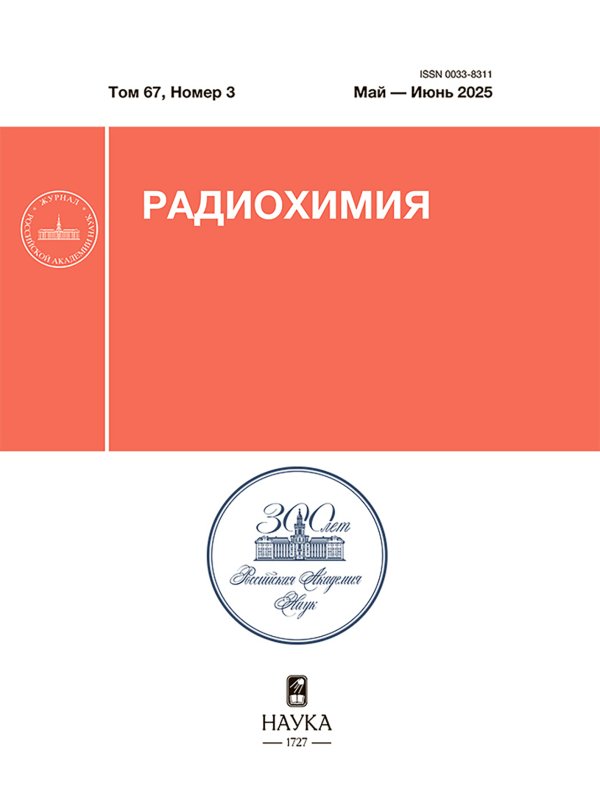Radiochemistry
Radiochemistry is an international peer-reviewed journal that covers the theoretical and applied aspects of radiochemistry, including basic nuclear physical properties of radionuclides; chemistry of radioactive elements and their compounds; the occurrence and behavior of natural and artificial radionuclides in the environment; nuclear fuel cycle; radiochemical analysis methods and devices; production and isolation of radionuclides, synthesis of labeled compounds, new applications of radioactive tracers; radiochemical aspects of nuclear medicine; radiation chemistry and after-effects of nuclear transformations. The journal welcomes manuscripts from all countries.
Media registration certificate: № 0110195 от 04.02.1993
Current Issue
Vol 67, No 3 (2025)
Articles
Reaction of Technetium(I) Tricarbonyl Hexafluoroacetylacetonate Complexes with CCl4: Formation and Crystal Structure of [99ТсСl(СО)3(РРh3)2] Stereoisomers and of fac-[99ТсСl(СО)3(С5Н5N)2]
Abstract
 185-194
185-194


The Action of Oxidizing Agents on Neptunium(VI) in Acid Solutions
Abstract
 195-198
195-198


Extraction of Lanthanides(III) from Solutions of Mineral Acids with Solutions of N,N' -Dimethyl-N,N'-dicyclohexyldiglycolamide Complex with Bis[(trifluoromethyl)sulfonyl]imide
Abstract
Extraction of lanthanides(III) from aqueous solutions of nitric and perchloric acids and bis[(trifluoromethyl)sulfonyl]imide with solutions of N,N'-dimethyl-N,N'-dicyclohexyldiglycolamide in organic solvents was studied depending on the concentration of acids in the aqueous phase. The stoichiometry of the extracted complexes was determined. It was found that the transformation of N,N'-dimethyl-N,N'-dicyclohexyldiglycolamide into a complex with bis[(trifluoromethyl)sulfonyl]imide leads to a significant increase in the extraction of lanthanide(III) ions from solutions of nitric, hydrochloric, sulfuric, and phosphoric acids.
 199-204
199-204


Extraction of Lutetium with Solutions of 2-Ethylhexyl Hydrogen 2-Ethylhexylphosphonate in Hexane from Nitric Acid Solutions Containing Ytterbium
Abstract
 205-213
205-213


Evaluation of the Efficacy of N-Succinimidyl 4-[18F]fluorobenzoate ([18F]SFB) as a Synthon for Labeling Peptides, Illustrated by the Reaction with Glutathione
Abstract
 214-220
214-220


Immobilization of Boron-Containing Radioactive Waste from Nuclear Power Plants in Magnesium Potassium Phosphate Compound
Abstract
 221-229
221-229


Influence of Sodium Aluminum Iron Phosphate Glass Composition on Its Resistance to Leaching
Abstract
 230-238
230-238


A Study of the Radionuclide Diffusion in Clay Materials Taking into Account the Coupled Physicochemical Processes
Abstract
 239-253
239-253


Comprehensive Method for Sorption Concentration of Radionuclides from Seawater
Abstract
 254-264
254-264












